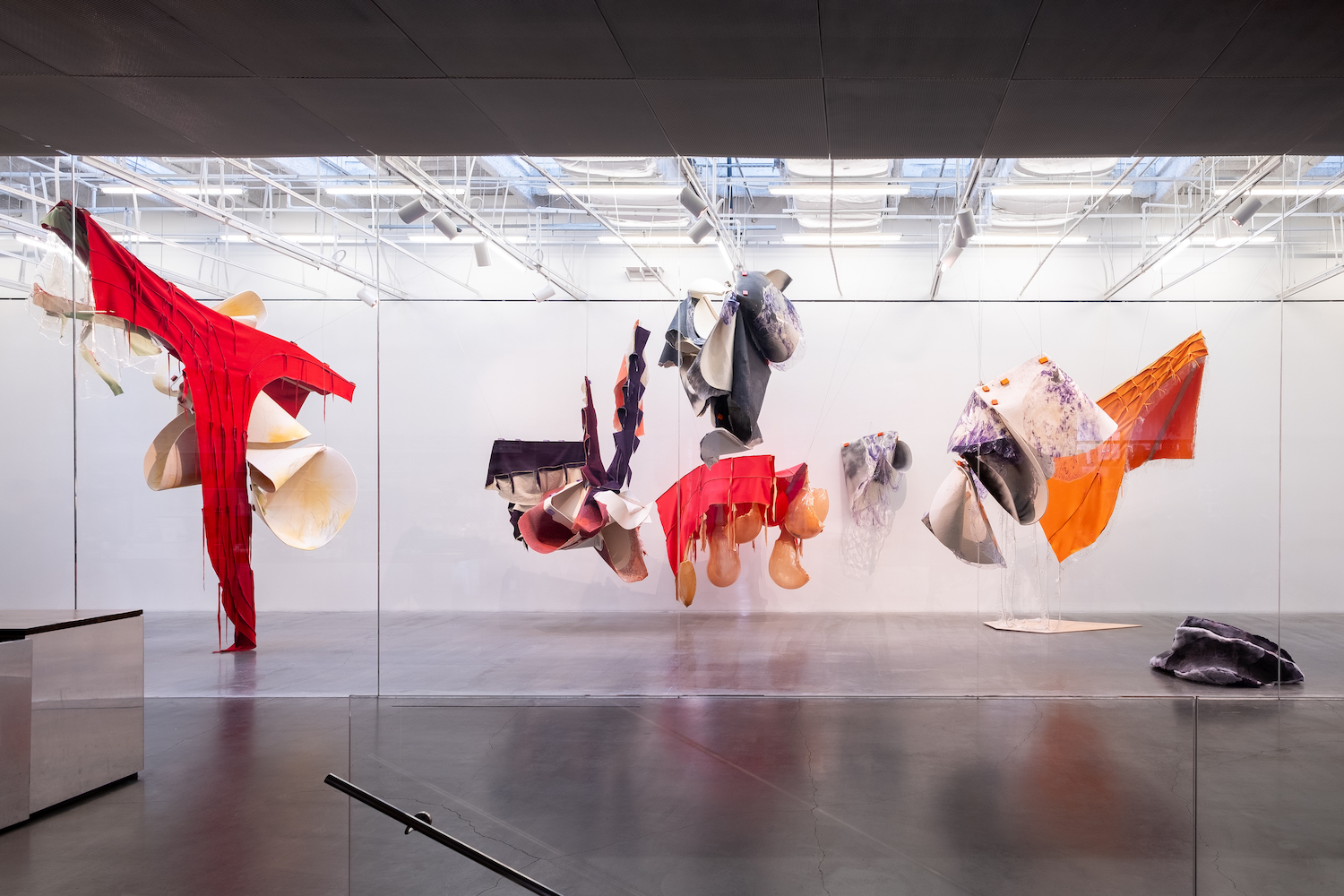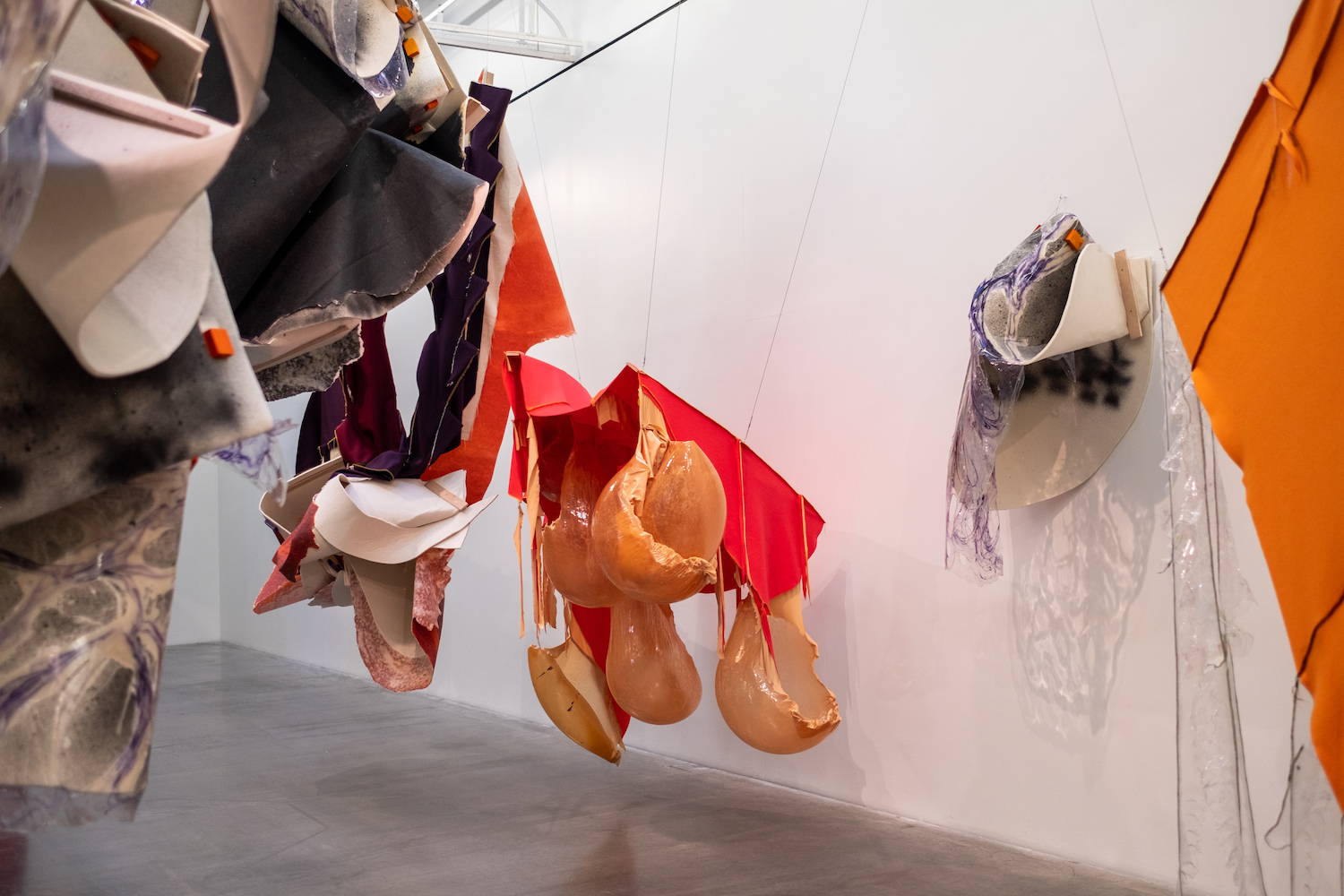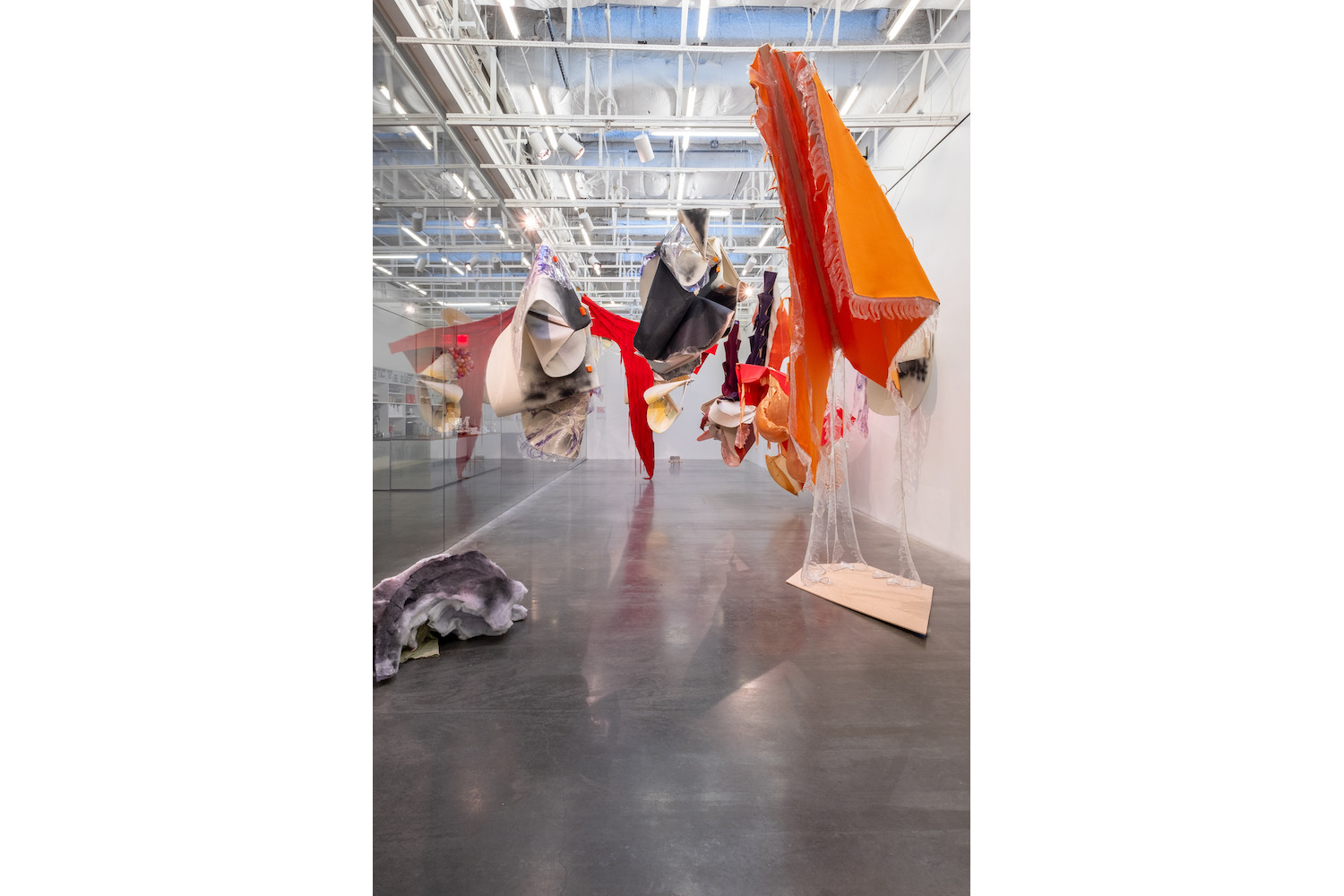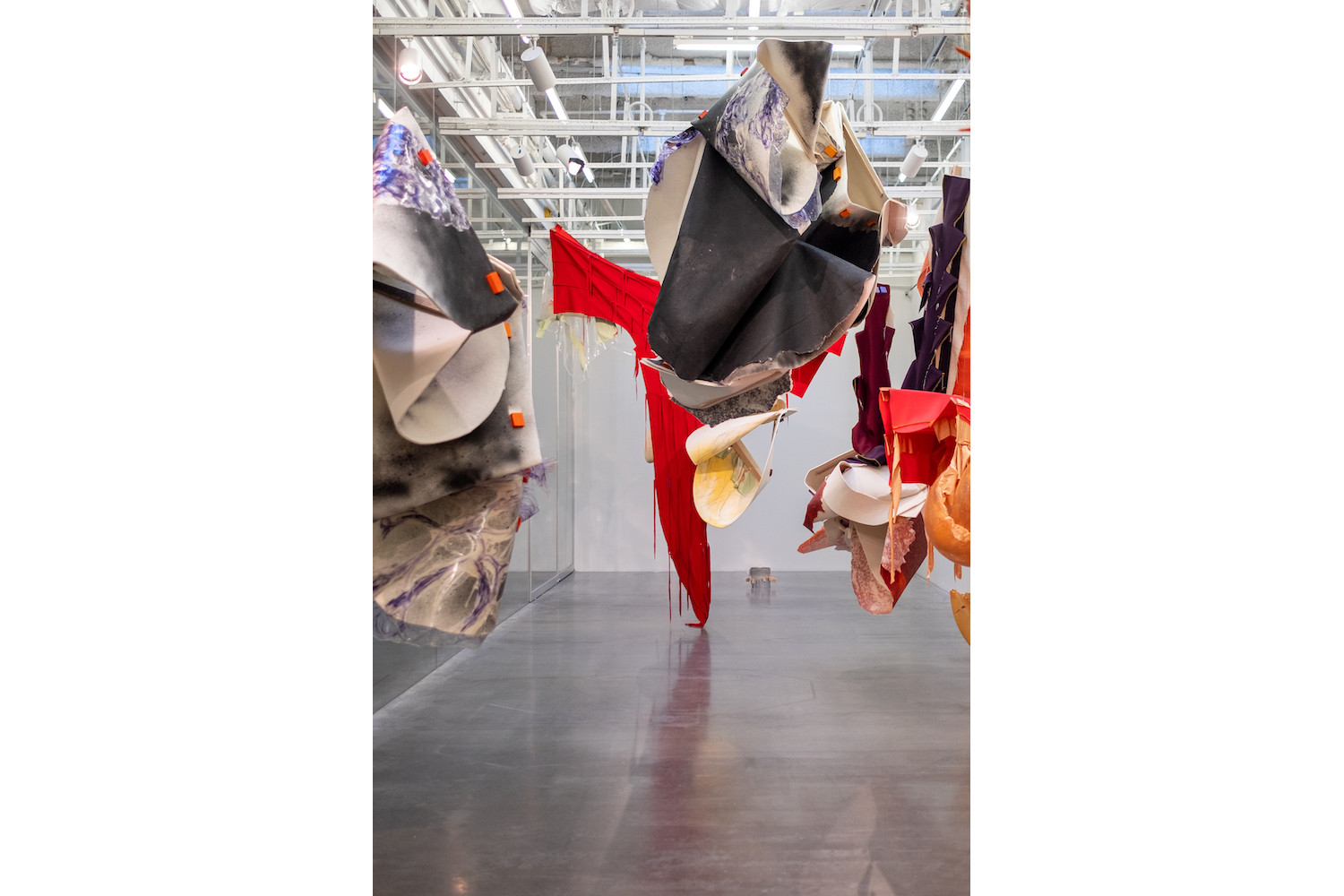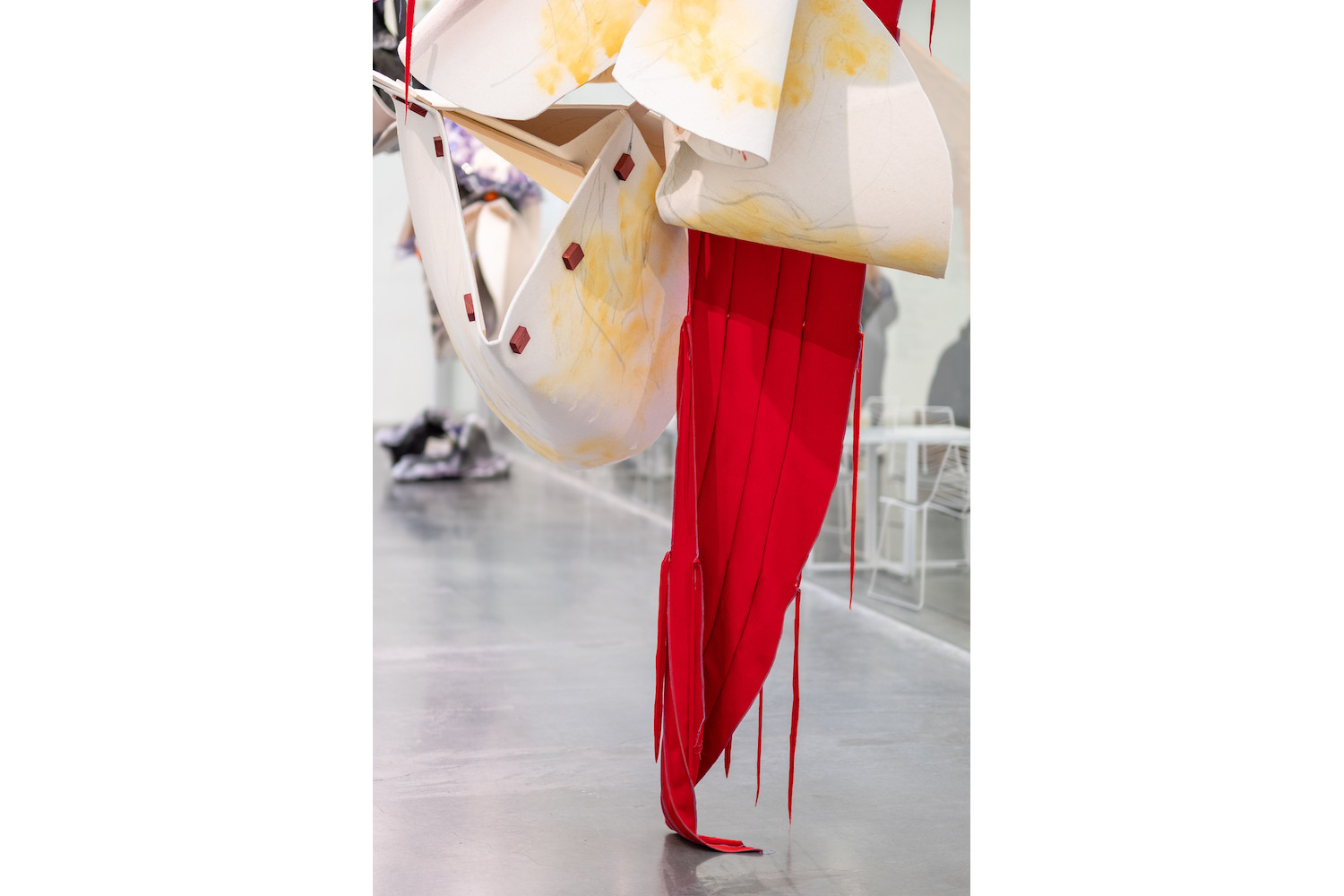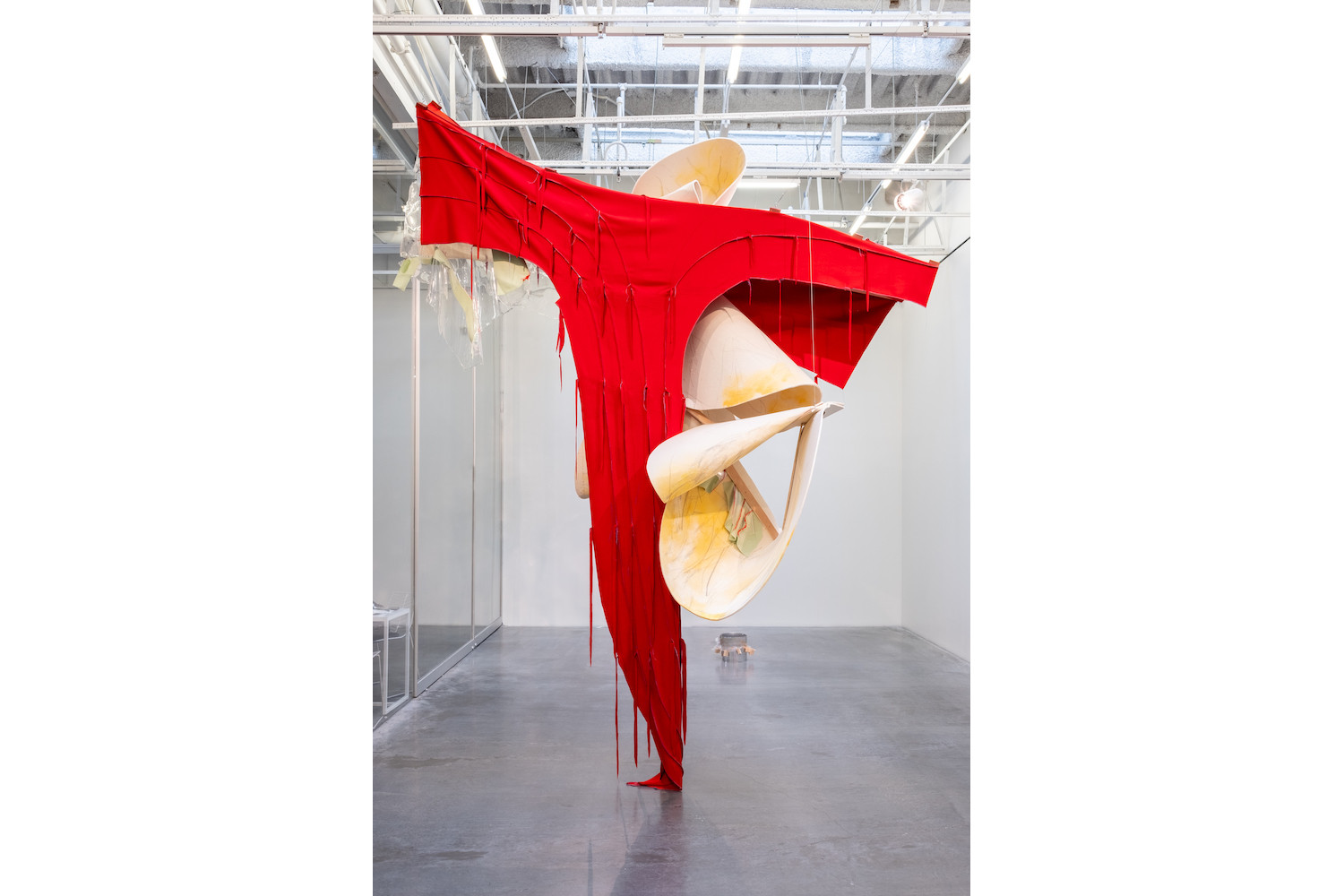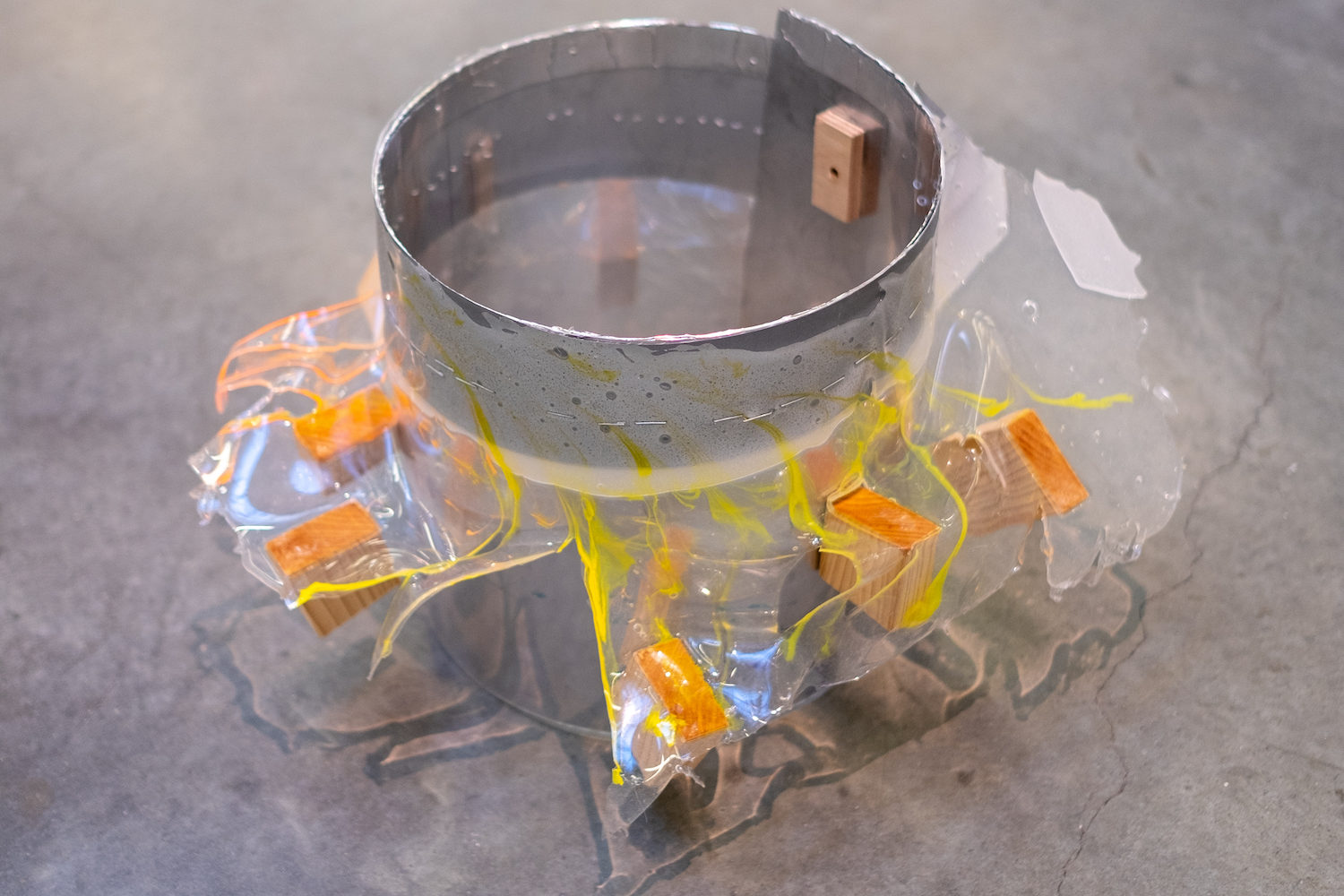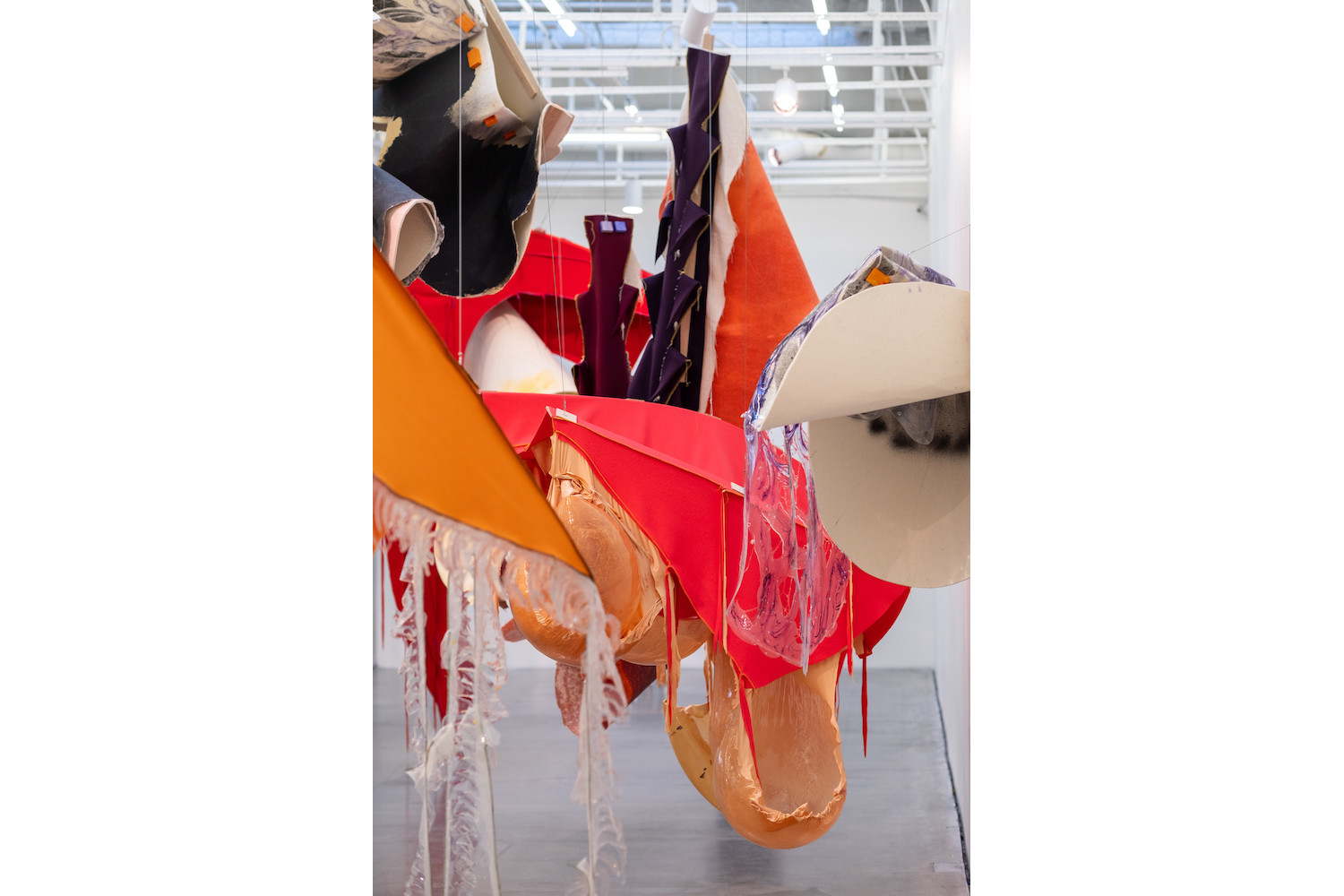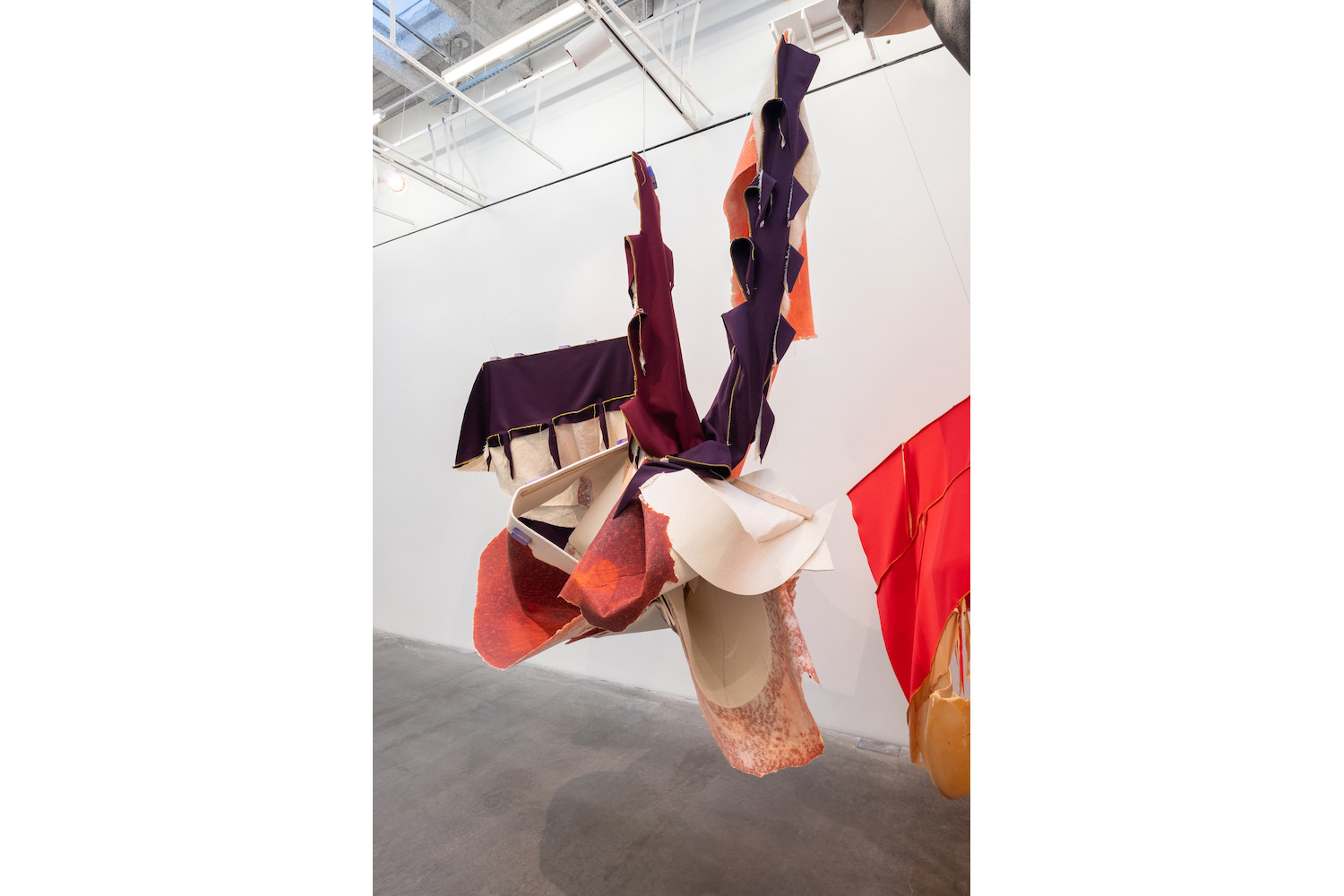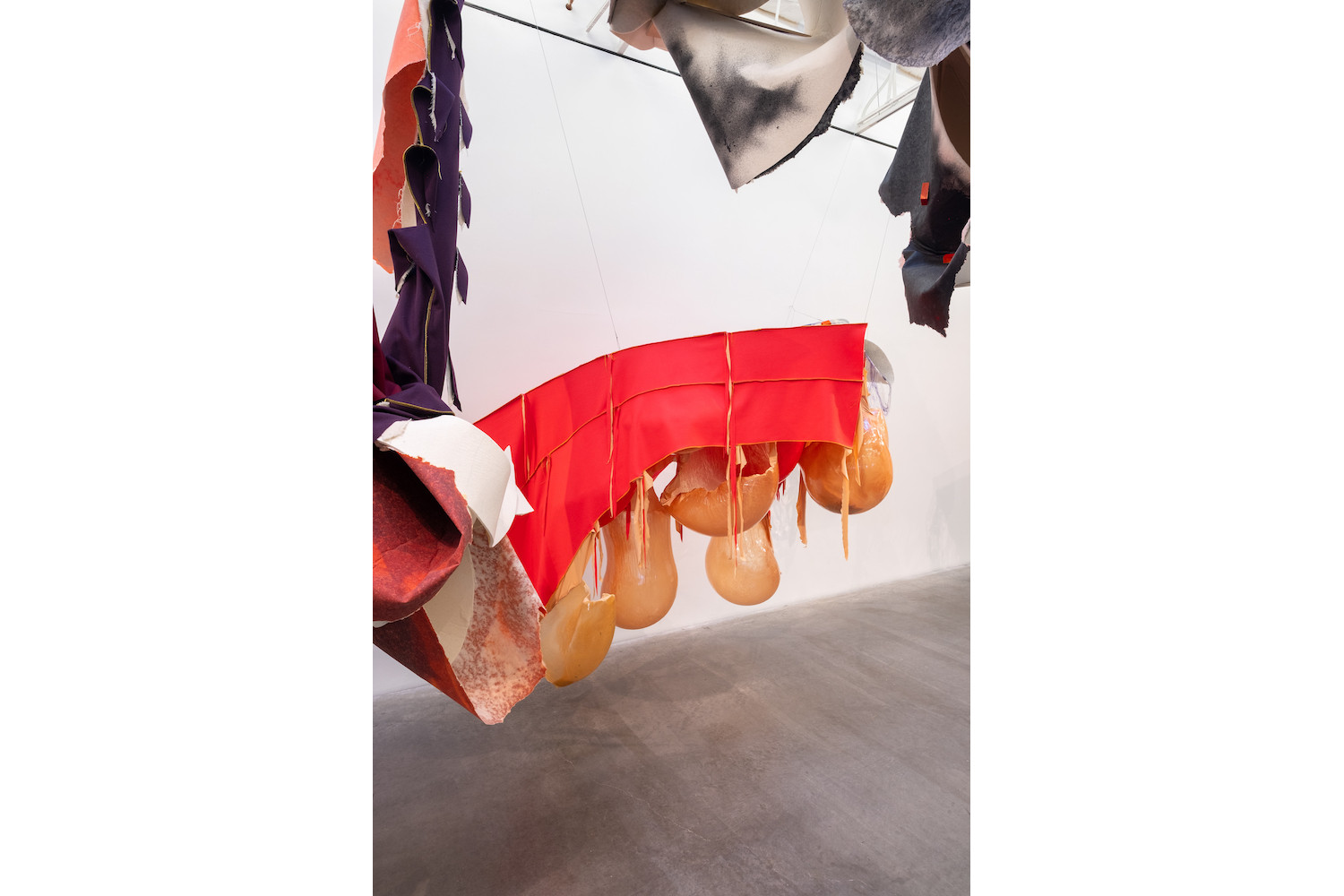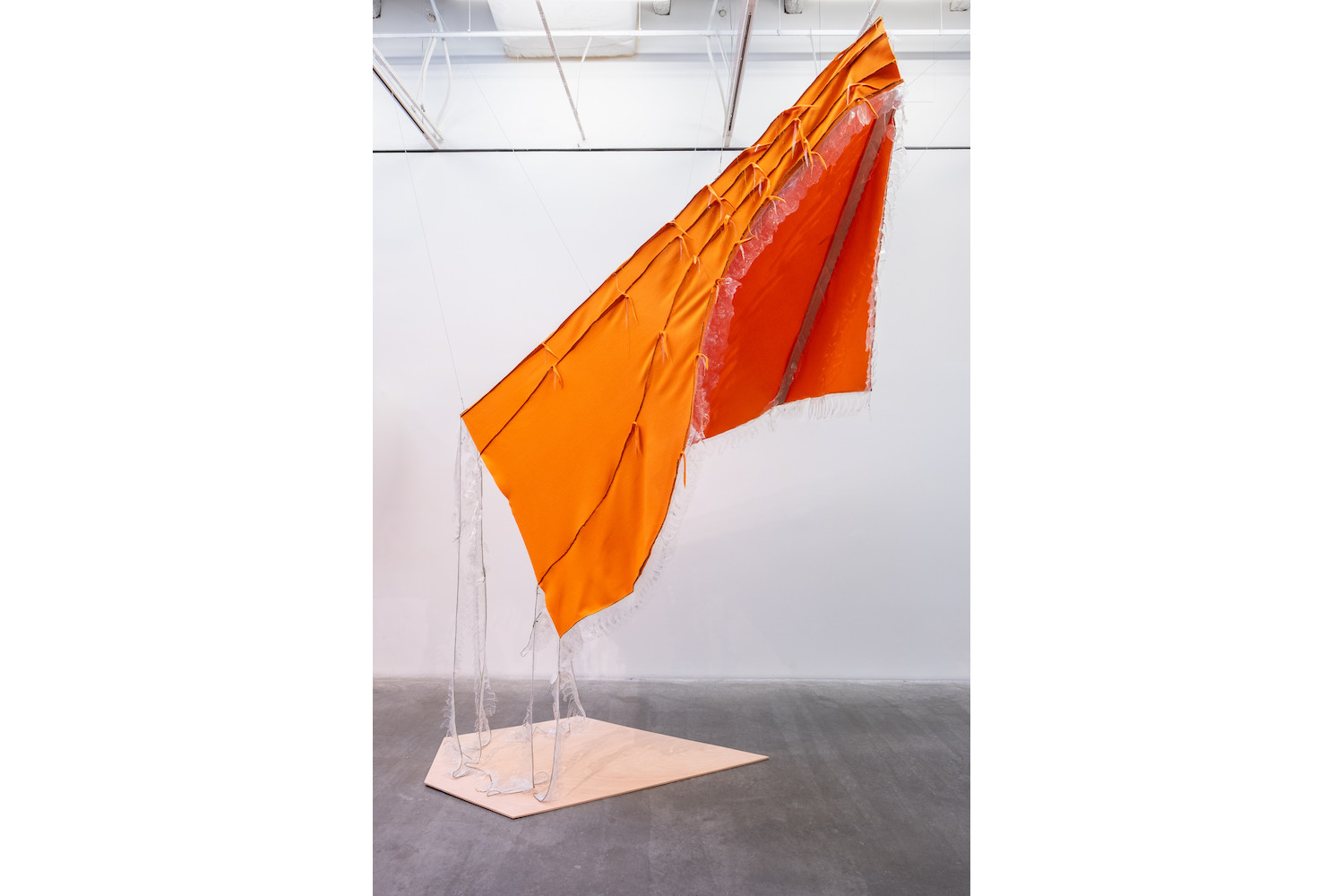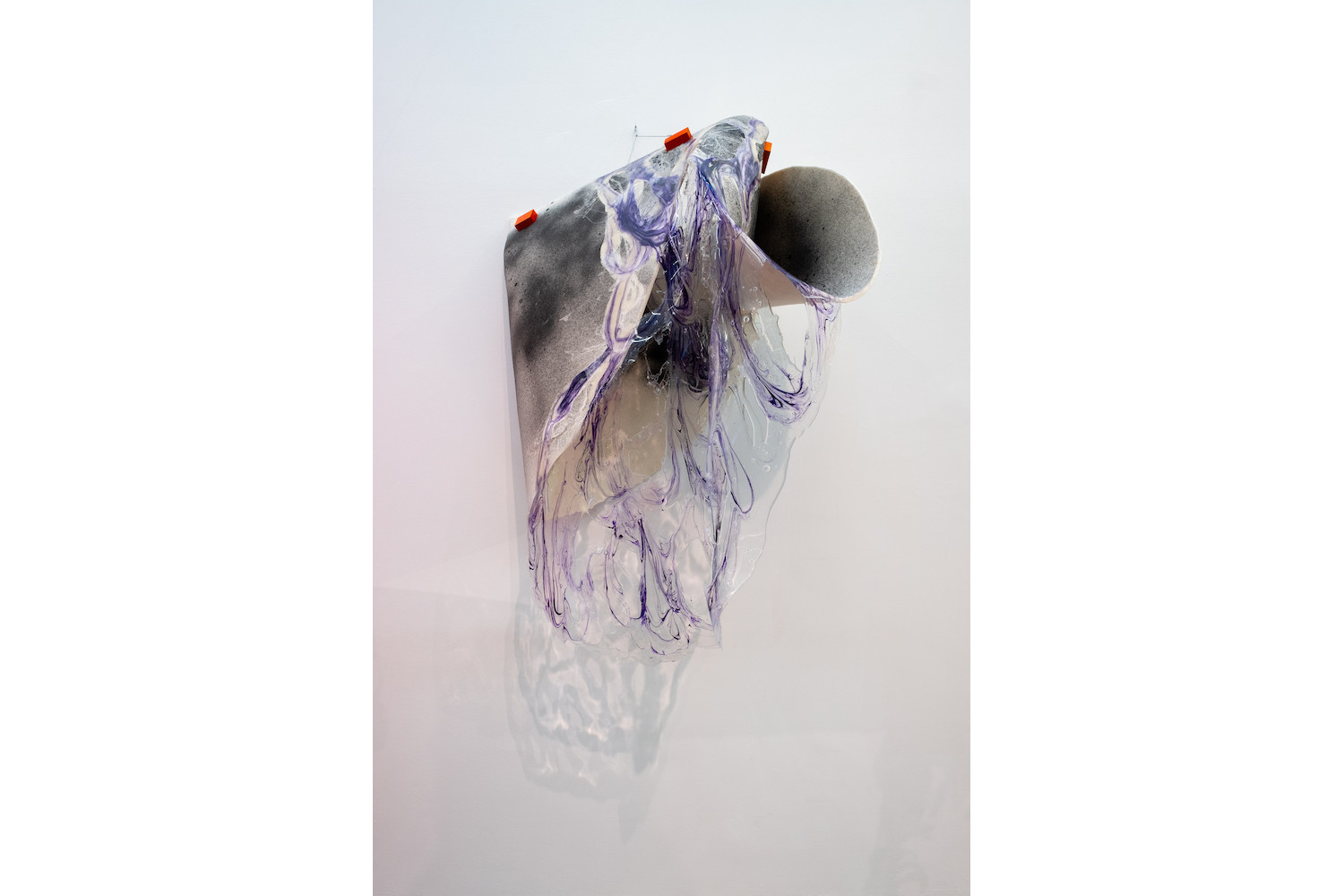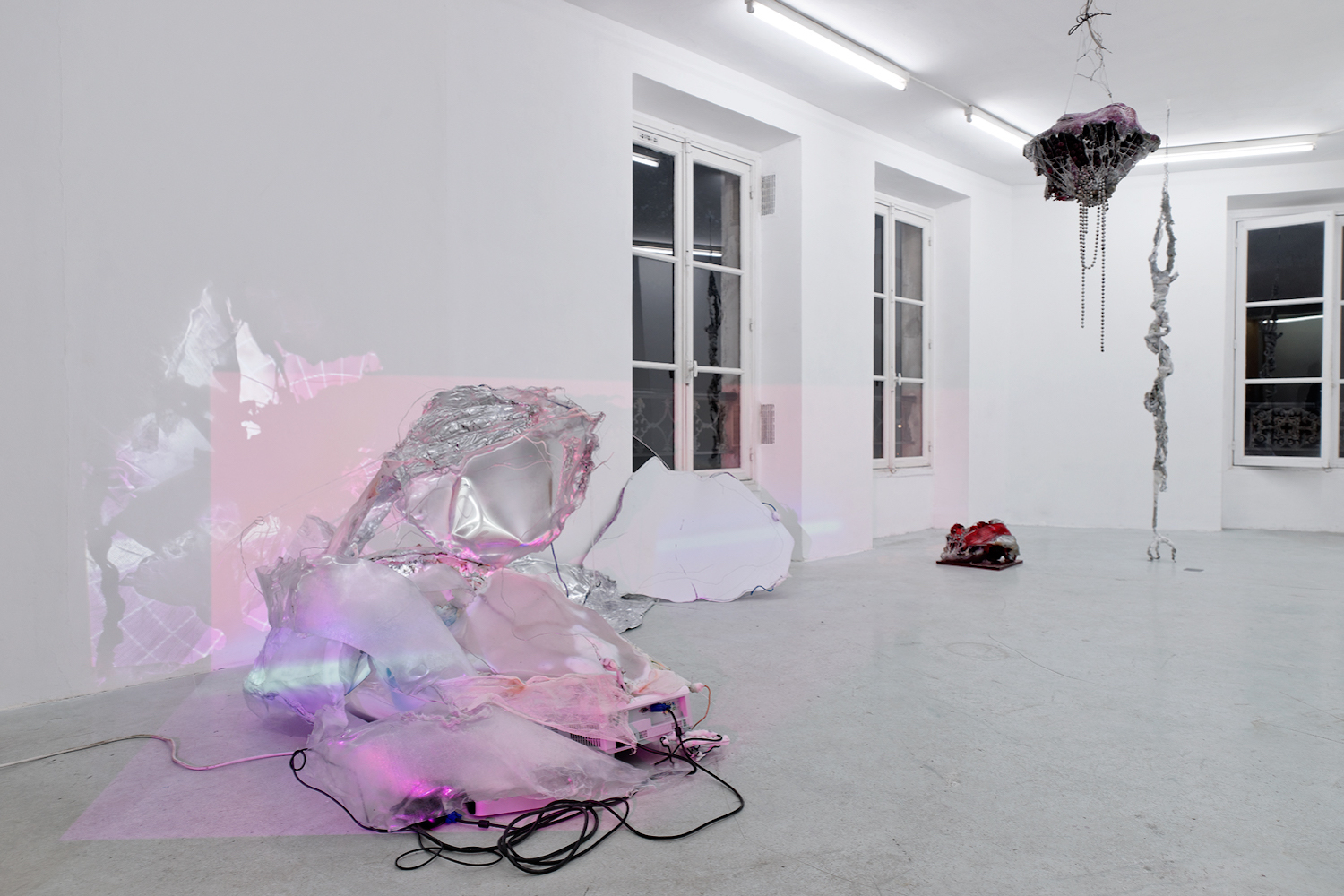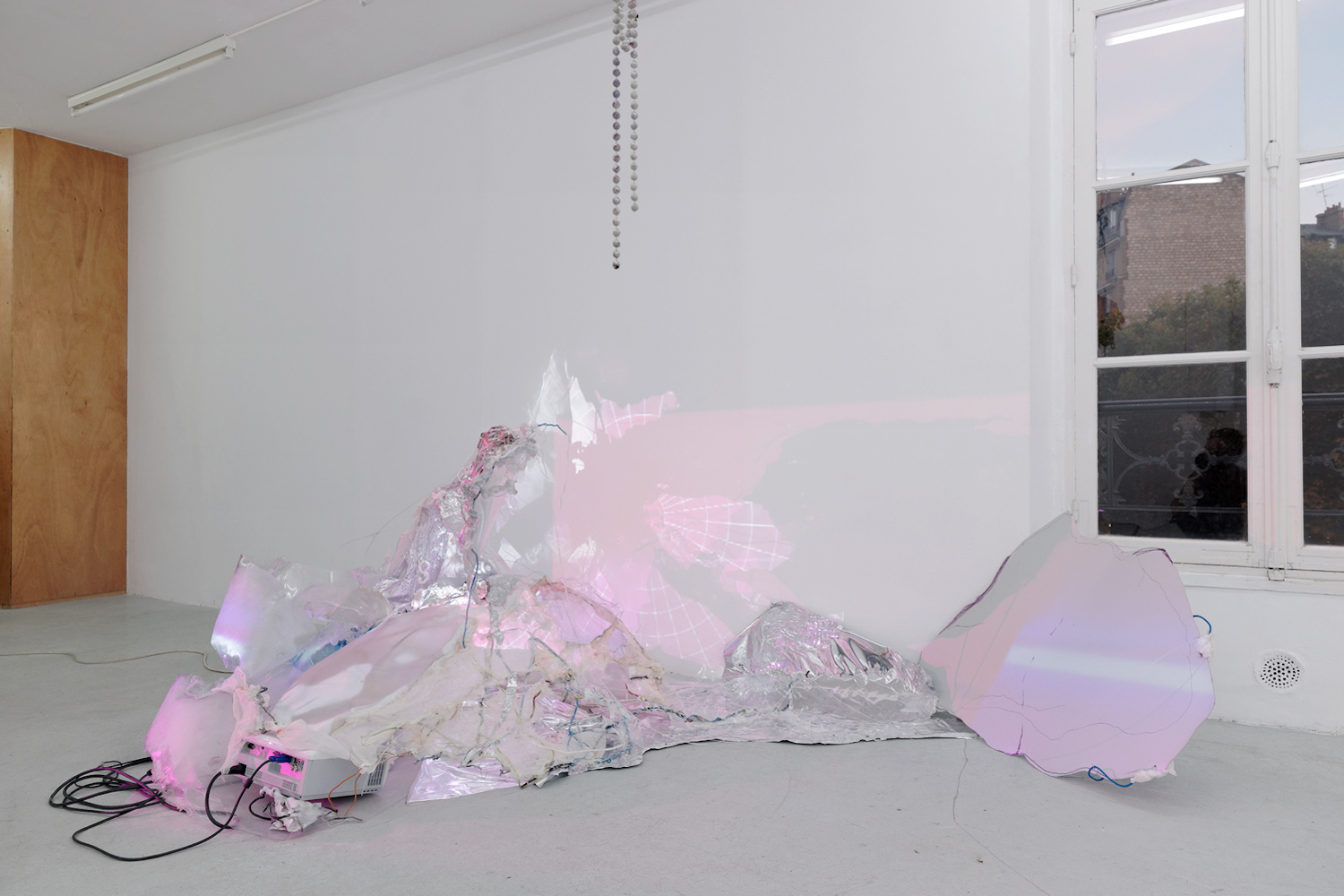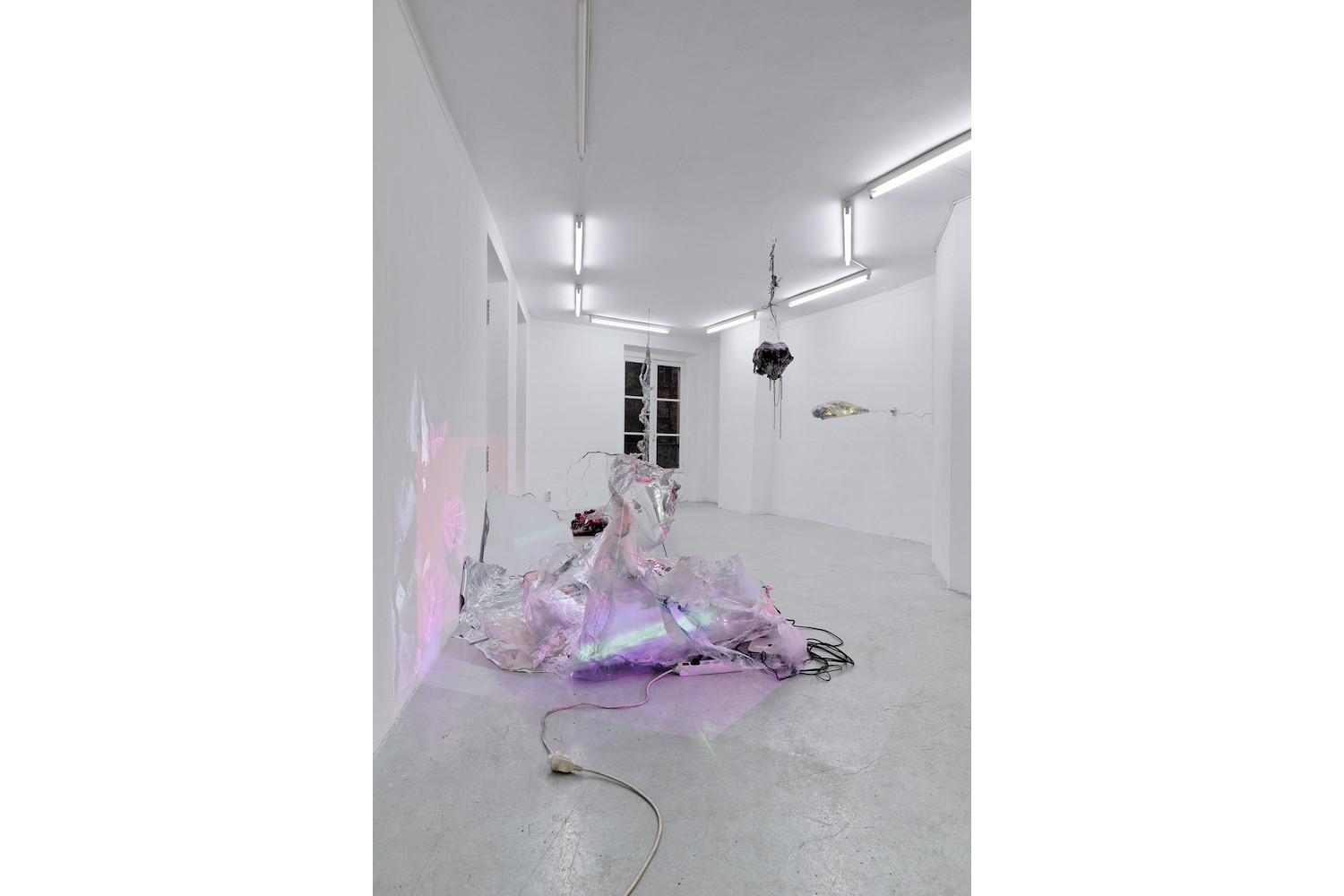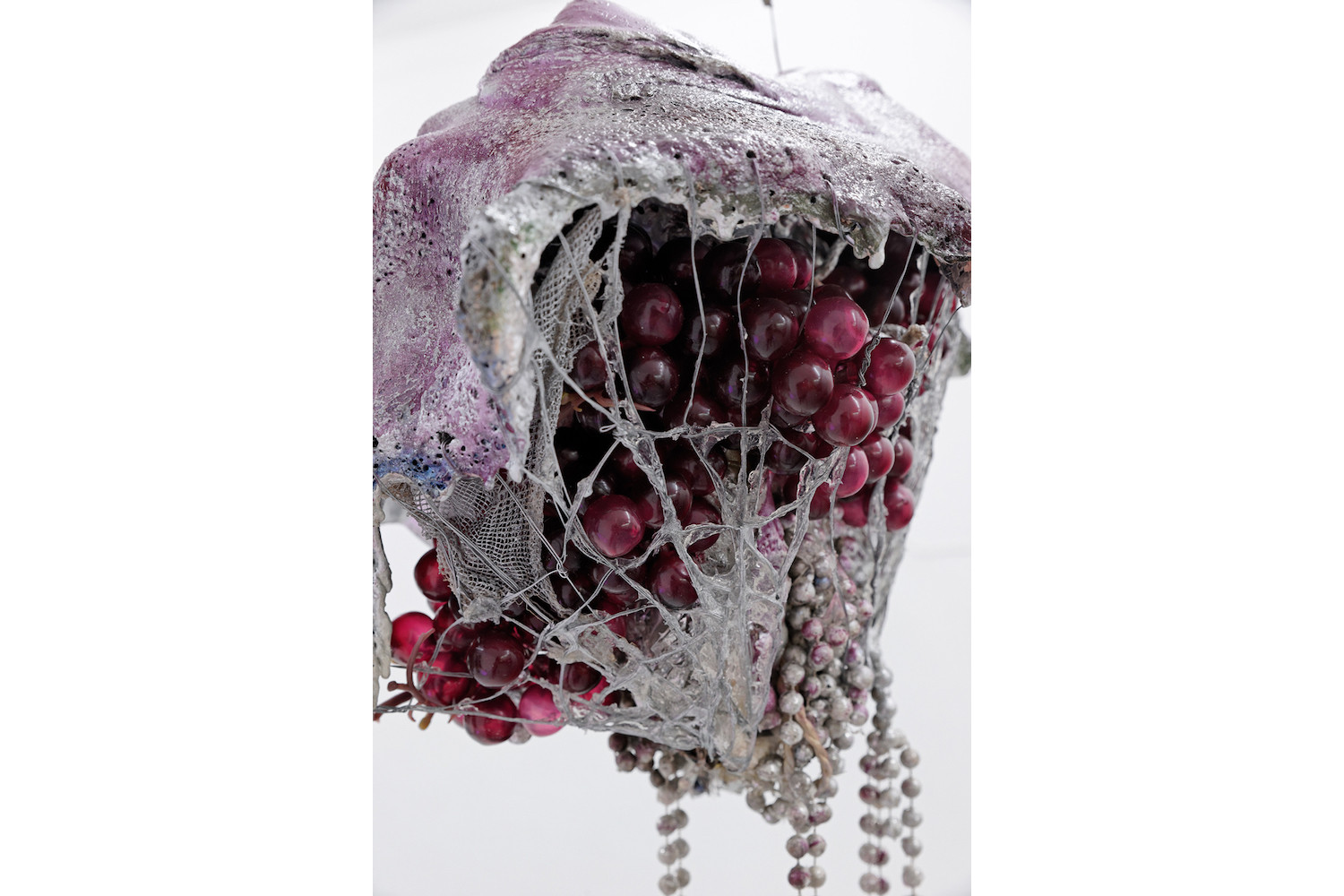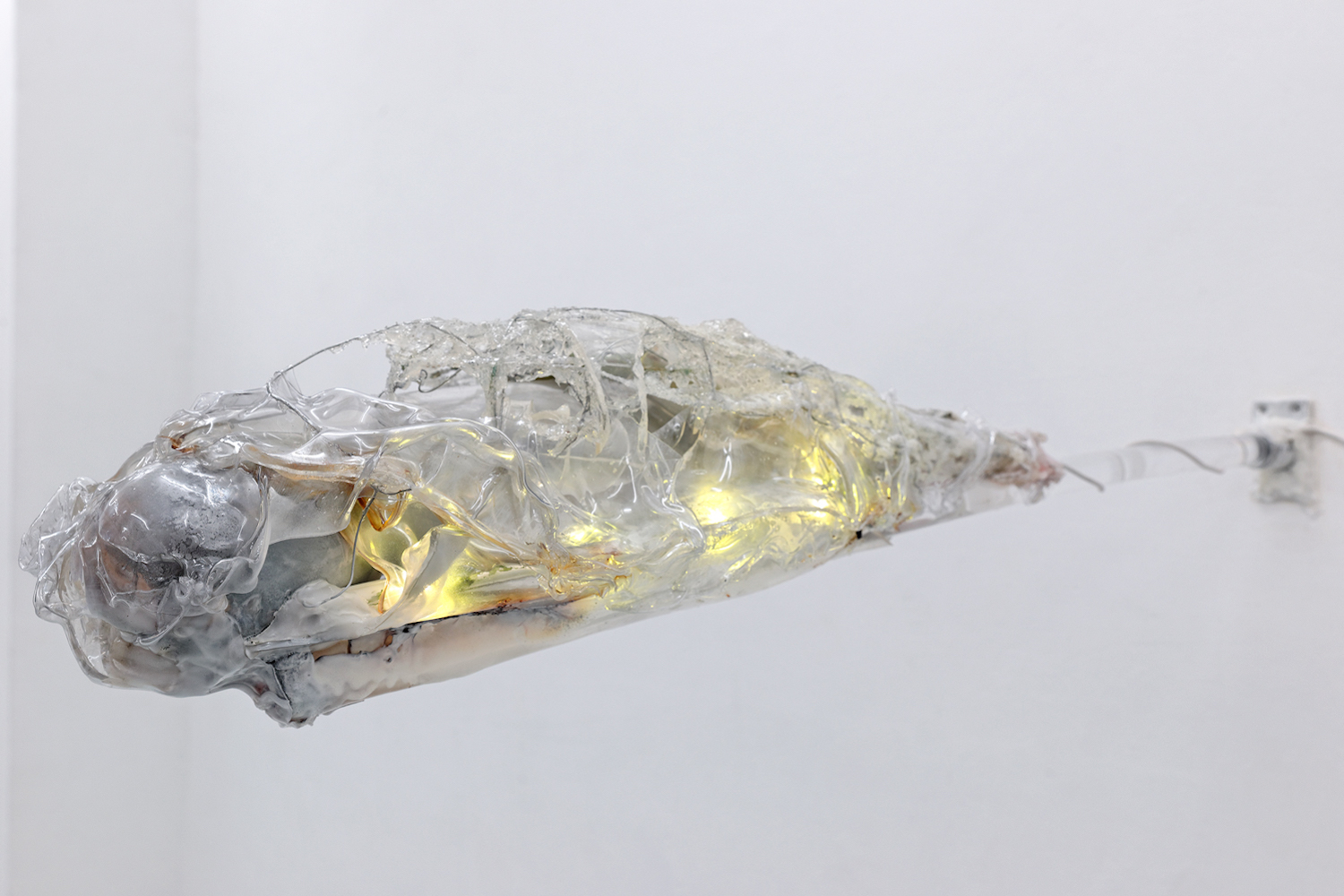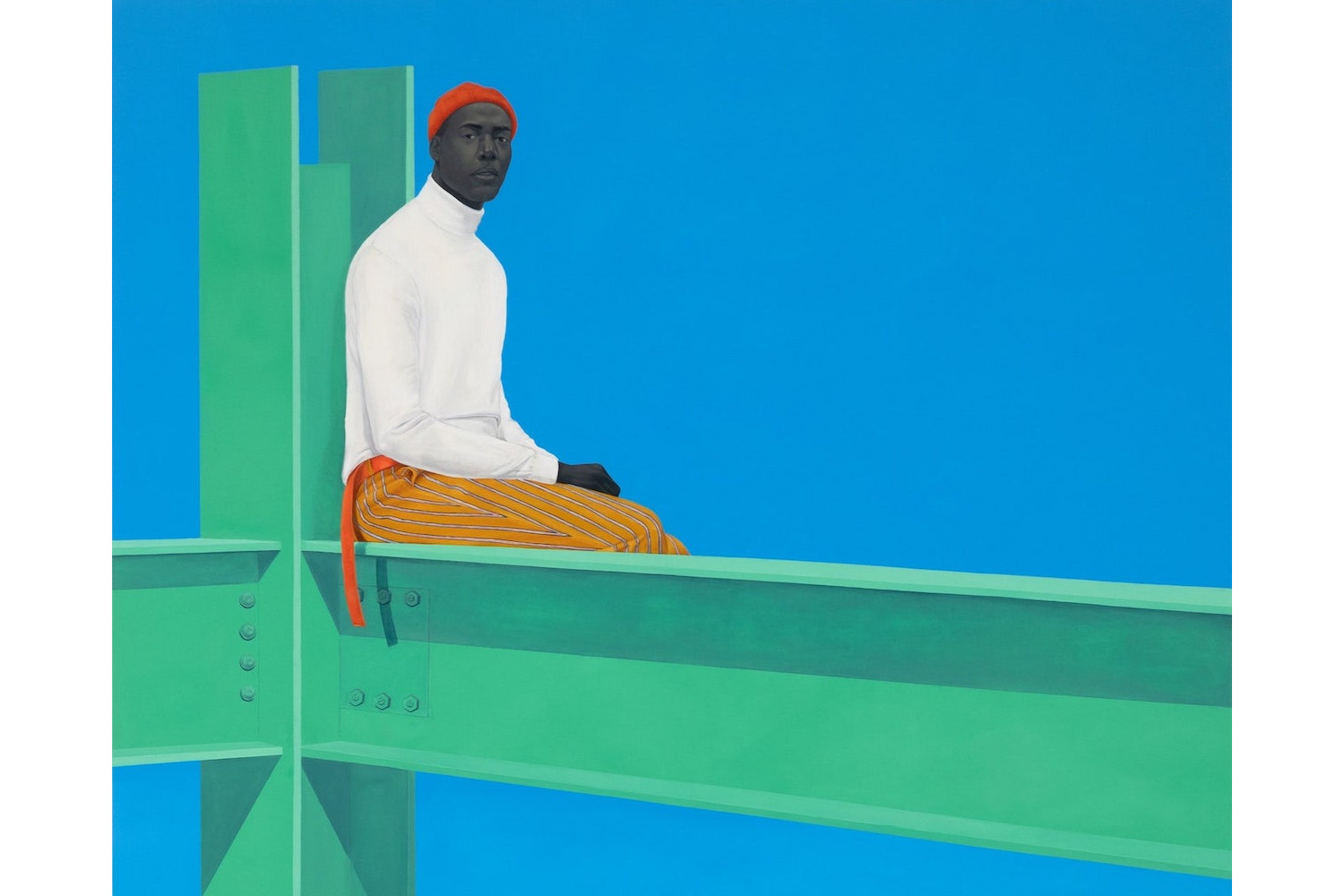Alex Bennett: Though your work involves sculptural assemblages of extremely diverse material, it’s curious to know that film was your initial interest. You even created your own Super 8 films. You’ve mentioned Tony Conrad’s “Yellow Movies” as a significant influence for you; to start, can we talk about this interest and the migration of particular principles/effects of film in your sculptural work?
Daiga Grantina: During my time at the art school in Hamburg I lived in a small attic flat. I worked in my living room, which was a little extension of the kitchen. I liked the concealment of this space, its density. And there was an idea of a composite between the filmed and the filmic material. I made a space encompassing assemblage that existed only on and for the film. Like making a mold for the time-material-entity of the film. In Paris I worked in an even smaller attic room. It was here that the turning point between projection and sculpture happened. I stopped using a camera and projected snippets of existing films to layer it with sculptural elements in the space. The projected light cones defined the entire order of forms. Maybe it was a way to achieve more distance from my surroundings and to use the tiny rooms for a process of pupation into a space of imagination. Somehow film was part of the small room; the attic room was an extension into an inside world. The “Yellow Movies” can be a metaphor for an augmented sensing and a jocular phenomenological approach to projection. Seeing that work shifted the way I perceived the idea of the medium. I wanted to make something more bare medium-wise.
AB: Conrad created a border, within which a temporality emerged — the tension of staging and mobility is useful when considering your work. I’m interested in your approach to light as a possible connective tissue or immaterial spine through larger, deconstructed assemblages. How do you perceive and handle light as a structure as well as a symbol? I’m thinking of the light cone, for instance, and its capacity to behave as a suspended space…
DG: Light is part and parcel of how I understand sculpture. As something that completes form and can be form itself. In Venice I followed both of these strings in parallel. I uncovered a large palladian window to have direct sunlight instigate and complete the process of laying out the pieces. And I made light shapes that existed in relation to the sunlight and also by themselves, depending on the hour of the day. Rotation and a constant sliding of the ground were part of handling the light and inherent to the sculptures. So light is not exactly a symbol or a through-and-through symbol. I like light to be its own dimension and embody all of matter.
AB: Your manipulation of organic and synthetic material undoes the fixity of its material to prioritize a generative, morphing system. “For What Eats Around Itself,” your new institutional show at the New Museum, you refer to the properties of lichen and the organism’s duality: the fungus as protective layer, the algae as photosynthesis generator. Their coexistence and self-replication develops its own organic surface across all kinds of terrain. How did you choose to allude to the characteristics of lichen, both in the construction of and materials used, in “What Eats Around Itself”?
DG: My friend Athena gave me a dry branch with lichen, and it was decorating the kitchen cupboard for a while until my cats started gnawing it and I had to pick up the pieces from all over the floor. The lichen was sometimes leafy and sometimes more bush-like. I found out that these kinds of growths were macrolichen. Meaning that scale in lichen is a question of form. Which I think is true for sculpture too. How is size determined by shape? I often felt that a work makes itself, a swirl that seems inherent in its line, like a frequency. So that self-replication is not adding or joining pieces but it is a question of matter as such. The matter is the joining.
I had in mind an underlying organometric structure. A structure that would not necessarily hold things physically together but still transmit my ideas of symbiosis and continuity. I used the overlock seam to carve large pieces of fabric into shapes. It is a very strong seam that works more like book binding because it joins the edges from one side. I didn’t assemble pieces of fabric but used one single piece so the seams are fixing a fold. The unity of the piece is visible with the interruptions of the seam. The seam is a marker of space. And it is pulling open another space. I chose a very dense fabric so that there would be no draping with the weight when hung. The seam takes the sole responsibility for how the piece will take shape. The pieces work as glyphs in the larger picture and carry elements on the inside that extend inward out of the seams. They are floating hinges. I am interested in lichen for they are the hinges between our soil and the atmosphere. They make the atmosphere.
AB: I wonder if language is one way of coordinating the interplay of material; you seem to engage with language for its influence upon form as well as its own malleability of meaning. For “What Eats Around Itself” you reference Rainer Maria Rilke’s relation of roses to eyelids: “Rose, oh pure contradiction, desire / to be no one’s sleep under so many / lids.” While in the much earlier exhibition, “Legal Beast Language” (2014) at Galerie Joseph Tang, the title references a glossary in Ben Marcus’s The Age of Wire and String (1995), which collects redefinitions and invents new terms (such as CLOTH-EATERS). Following Rilke, the dynamism provoked by both sleep and vitality, weariness and excess, is interesting; how do you like to use language? Is there an impulse to decenter or interrogate figuration and the anthropomorphic?
DG: At this moment I am experiencing very closely the becoming of language in the early stages with my daughter. It is imbedded in gesture and action of the body. It is sound and song, gesture and dance. If gesture and figuration extend from the same line, then maybe cadence is what links language and figuration, so figuration can bring resonance into being as much as a sound line. I would like to connect this thought back to lichen. Can we speak of a musical scale in lichen? Is scale the connecting element in sign systems? The sign system of lichen would then be a possible category of languages, a language of transfiguration maybe. I am interested in Ben Marcus and Rainer Maria Rilke for how they exceed the identity of language. Through their work I can read language as part of a larger sign system to unlock expressions of the heart.

